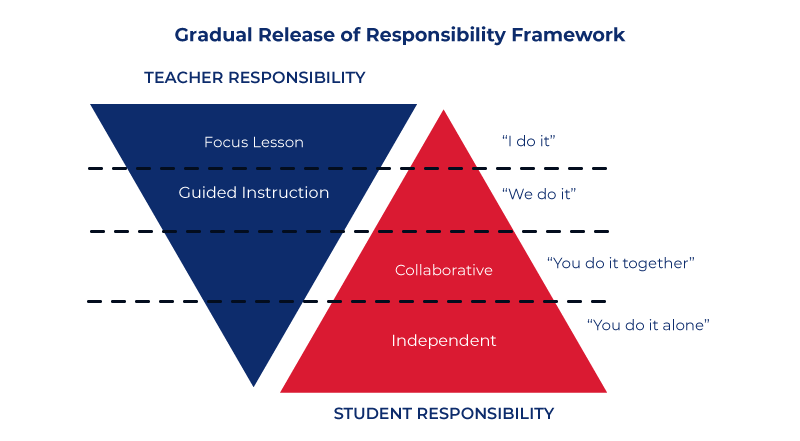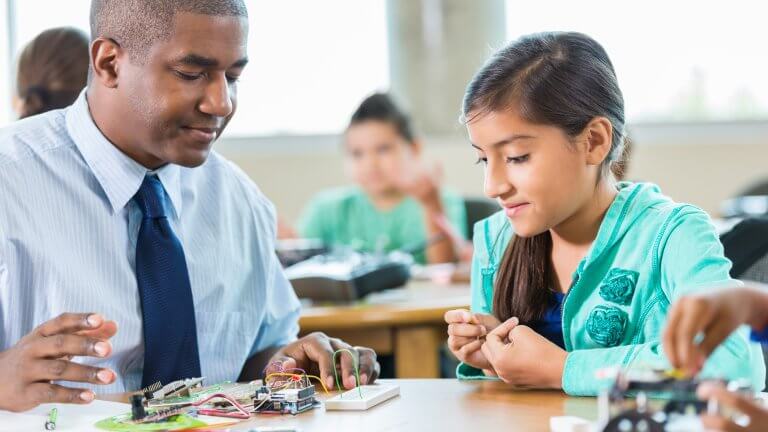How would you teach a young child to ride a bike? Would you give them a regular bike and say, “Go for it!” or would you start them off on a bike with training wheels? Would you stand back and silently watch them struggle to balance or would you put your hand on the back of the bike to steady it and offer encouraging feedback? Just like an adult offers supports to a child learning to ride a bike, effective teachers offer supports to students as they are learning to master a new skill. These supports, referred to as scaffolded supports, provide temporary assistance and are necessary to allow students to be successful on tasks they are not yet ready to do alone.
When planning scaffolded supports, start by asking yourself the following questions:
- What do my students know?
- What am I scaffolding towards?
- What is motivating to students?
- What amount of support is necessary?
What do my students know?
To determine the types of scaffolded supports to offer students you first need to find out what students can already do independently and what they can do with support.
What am I scaffolding towards?
An understanding of curriculum standards, scope and sequence, and prerequisite skills is imperative to be able to plan scaffolded supports. The more you know about your content, the better you will be able to structure the learning tasks for students.
What is motivating to students?
When you create an environment where learning is purposeful, culturally relevant, and engaging it helps students to feel comfortable. When students feel comfortable they are better able to effectively use scaffolded supports.
What amount of support is necessary?
Providing just the right amount of support is key. If you don’t provide enough scaffolded supports students will not be successful. If you provide too much, students can become dependent and may not internalize the concept.
Scaffolded supports can be planned out ahead of time or can be provided at the moment during instruction. Planned scaffolds include things like graphic organizers, sentence stems, chunking, word walls, and visual schedules. Scaffolds provided in the moment are often in the form of “talk moves” where a teacher will step in to provide more support. Some of these types of “talk moves” include thinking aloud, clarifying instructions, offering direct explanations, and cueing.
Remember, our goal as educators is for students to become independent learners. To accomplish this goal we need to make sure that over time we transfer the responsibility for learning to the student. This is often referred to as the gradual release of responsibility framework. This framework is applicable across grades and content areas. Students may move back and forth between each of the components as they master skills, strategies, and standards.

Fisher, D., & Frey, N. (2008). Better learning through structured teaching: a framework for the gradual release of responsibility. Alexandria, VA: Association of Supervision and Curriculum Development.
Providing scaffolded supports can be a challenging practice, but it is also one of the most powerful and effective teaching strategies that lead to students being successful with all types of learning tasks.
Gretchen Kehrberg was formerly a Special Education Specialist at Region 13. In addition to her experience at the Education Service Center Region 13, she had ten years of teaching experience. Gretchen is passionate about education and working with teachers to create inclusive learning environments where all students have the opportunity to grow academically, socially, and emotionally.






Add comment